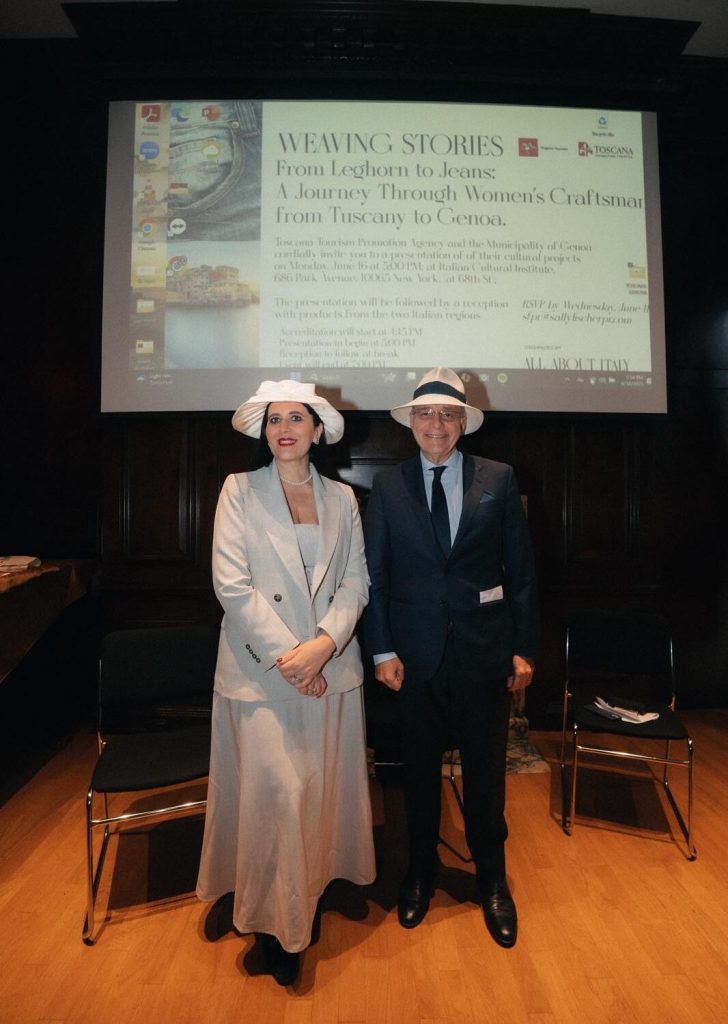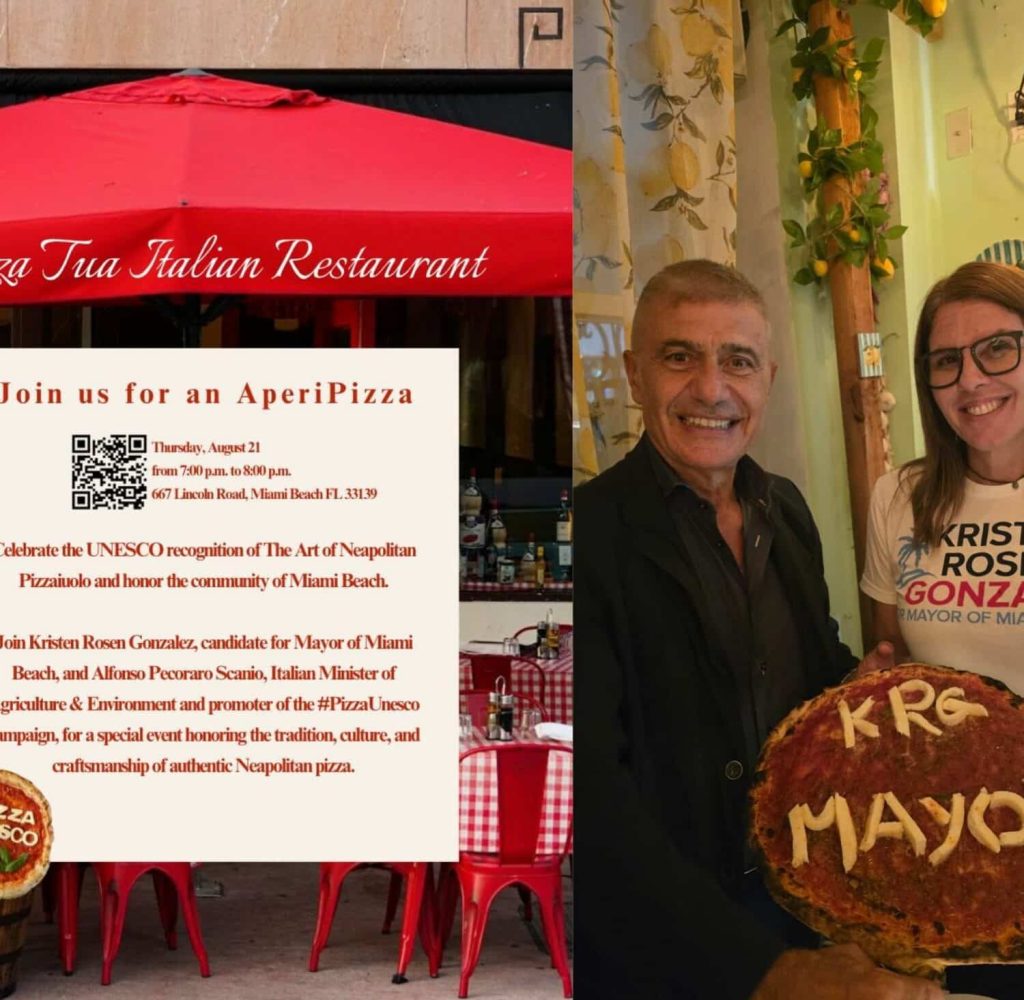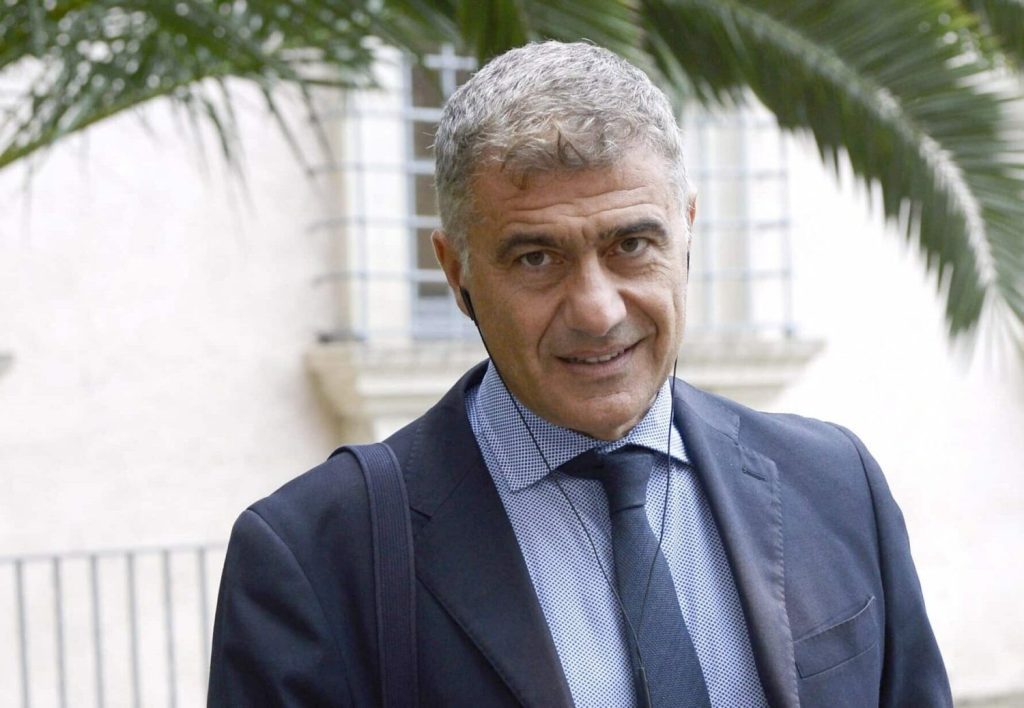In the era of tourist overcrowding and hit-and-run tourism, Tuscany chooses to tell its story through new keys, restoring depth and authenticity to the travel experience. It does so with projects such as Toscana Diffusa, with alternative itineraries, enhancement of artistic craftsmanship, and attention to the role of women in tourism. Telling this vision in New York, during an institutional promotional trip, were Francesco Tapinassi, Director of Toscana Promozione Turistica, and Clara Svanera, Cultural Promotion Manager.
Francesco Tapinassi, what is your vision as director? In what direction is Toscana Promozione Turistica going?
Francesco TapinassiThe biggest challenge for those promoting already well-known tourist destinations, such as Tuscany, is to address the issue of overcrowding. Forecasts ten years from now speak of a doubling of flights and a 50 percent increase in the number of tourists. If the pressure is already high today, we can imagine what will happen in the future.
Our job is to get people to come to Tuscany, but not having Captain Kirk’s “teleportation machine from Star Trek,” the only tool we have is information. We can help tourists discover even what goes beyond the iconic monuments.
We cannot stop someone from going to Florence to see the David, especially if it is their first time, but we can improve their experience. We can suggest less crowded alternatives, smarter visiting times, such as going to San Gimignano late in the afternoon instead of early in the morning, or visiting Montalcino 20 kilometers away, which is just as fascinating.
This is part of the strategy of the Toscana Diffusa project, which aims to enhance new destinations, new keys and new travel themes, so that guests can appreciate the full variety of the region’s tourism and cultural offerings. This is true for all markets, but it is particularly important for the American market, which accounts for more than 65 percent of arrivals in Florence and 75 percent in art cities-a level of concentration 20 percentage points higher than the average for other foreign countries.
Dr. Clara Svanera, in this context, what is your role and what are your efforts focused on in the cultural and artistic promotion of Tuscany?
Clara SvaneraCulture is one of the main tools for promoting Tuscany. But when we talk about culture, we are not only referring to museums and art: we are also talking about living culture, such as that which is developed in craft workshops, which have always been present and are still active in the region.
These workshops are not only productive places, but real centers of beauty and creativity. They are also keys to storytelling, especially for those who, like me, have a journalistic background. I am always looking for the “treat,” the novel narrative element, something that amazes and fascinates. In the United States, where we arrived for the third consecutive year with new submissions, one of the most successful stories was the straw hat story.
It is a tradition that dates back to the Renaissance: as early as Cosimo I de’ Medici gave gifts of it to aristocratic guests. Straw making had its heyday between the 18th and 19th centuries, thanks in part to an entrepreneur from nearby Romagna who sensed the artisanal potential of the grain. This production was carried out by very skilled women-the trecciaiole-who wove very thin threads, impossible to replicate with machines. It is an excellence linked to a town such as Signa, near Florence, where between 1700 and 1950 there were 80,000 people, mostly women, employed in this process. It was so successful that a railroad was built to take the hats to Livorno, from where they left for the United States.
This is also part of another project we care deeply about: women’s tourism. We tell the story of Tuscany through the eyes of women: artisans, cooks, spa operators, guides, cultural entrepreneurs. They are often the ones who choose travel destinations, and they do so with great sensitivity. And they are also attracted by cultural itineraries, by authentic experiences.
But there is more than just straw. Tuscany has districts such as the wool district between Prato and Pistoia, silk, and gold working. In Florence, for example, there is still a silk factory that preserves a warper designed by Leonardo da Vinci. It is the same one where Jeff Bezos, who recently celebrated his wedding in Italy, also sources his supplies.
All this testifies that our culture is alive, that it has not crystallized in museums. Renaissance artists were also craftsmen: Michelangelo, Donatello, Leonardo called themselves “opera masters.” The word “art” comes from “ars,” meaning technique, manual dexterity. Today that craft still lives on, and it becomes an art form in itself.
For the American public, storytelling is a key key. How effective is this storytelling in promoting Tuscany in the United States?
Francesco TapinassiThe U.S. market was the top international market for Tuscany in 2024. It is a loyal market, with a very high level of satisfaction and very positive reviews, as well as being the highest in terms of average daily spending. It has grown 30 percent more than other markets in the past decade.
But it is also a very concentrated market: 75 percent pours into art cities, particularly Florence (65 percent of arrivals). This forces us to reflect. If we don’t tell something new, the risk is that the experience becomes frustrating. Cities can be overcrowded, not very hospitable. We need to suggest alternatives, new destinations, authentic experiences.
You have also mapped bicycle routes. Is this a strategy that also looks at sustainability?
Francesco TapinassiWe are the first region in Italy for kilometers mapped for biking: more than 18,000. The Atlas of Soft Mobility is an accessible tool: you enter time, gradient, type of bike, and the system proposes ideal routes.
These routes combine the three great attractions of Tuscany: culture, landscape and food and wine. From unspoiled nature–Tuscany is the region with the most forests in Italy–to small villages, to food and wine excellences, which are highly appreciated by the American public, with a focus on major wine brands, which in turn are tourist attractors.
The year 2025 is full of anniversaries-Michelangelo, Boccaccio, Mascagni. How have you promoted these figures in the United States?
Clara SvaneraWe presented the highlights of the cultural calendar. Michelangelo is not limited to Florence: his art starts from the marble quarries of Carrara, the same ones recently used by the film The Brutalist. Michelangelo was a genius of the three arts: architecture, painting, sculpture. And there are smaller, but precious places, such as his home in Florence, where he kept shopping lists…drawn!
Boccaccio was also a protagonist: the Decameron was the first example of humanist literature in Europe. Telling Certaldo, his birthplace, was exciting. Americans are very receptive, perhaps also because of that umbilical cord that binds them to Italy. We are talking about 25 to 30 million Italian Americans.
There is also the 80th anniversary of Mascagni’s death, and we are preparing initiatives on Puccini’s Turandot, designed to promote family tourism, because it is an opera-fairy tale. And also Fattori, the Negroni, the story of the cocktail that originated with a Tuscan count and is now among the most drunk in the U.S. Every day we discover new stories, and every story is a new opportunity for storytelling.
What is the balance of the U.S. mission and what are you taking home?
Francesco TapinassiIn 2024 Tuscany was elected Best in Travel on the Planet, the only Italian destination. We measure the success of the mission to New York in two ways: the great participation in the three events we organized, and the response of the public, journalists, and operators.
Ours is not an easy job-I could stop and tell about Pisa, Siena, Florence and close in a quarter of an hour. But we bet on new stories, on small municipalities, on crafts, on forgotten figures. And when we find feedback and participation, it means that this path is the right one. It applies to the United States, but also to international missions in general: affection for Tuscany and curiosity about how we tell it today.
And from a results perspective, how do you measure the effectiveness of this strategy?
Francesco TapinassiClara already measures how many of the participants in the events ask for insights, write articles, raise content. It is a first, immediate feedback. But there is also a “Tuscan case” in the medium term, which helps us understand how much this narrative, which goes off the beaten track, brings tangible results. And the data, even those, are beginning to prove us right.
The article Toscana Promozione Turistica made a stop in New York: ‘Our strategy for more authentic and sustainable tourism’ comes from TheNewyorker.
The post Toscana Promozione Turistica made a stop in New York: “Our strategy for more authentic and sustainable tourism” appeared first on Good Morning Italy.




